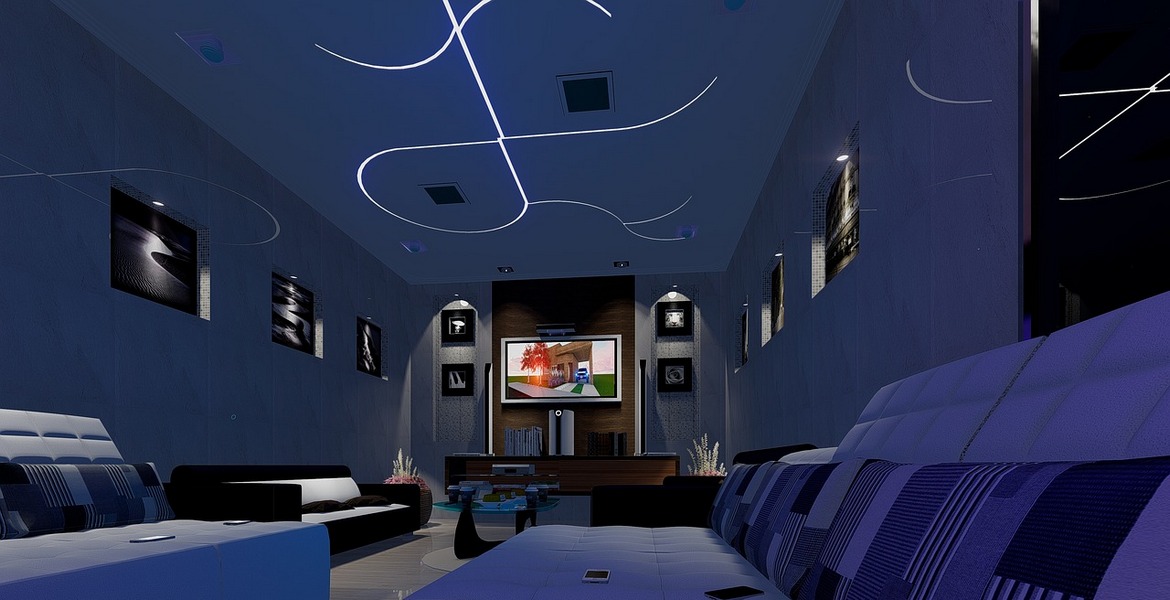A light-emitting diode (LED) is a semiconductor device that converts electric current directly into light emission. LED lighting – one of the promising areas of artificial lighting technology, based on the use of LEDs as a light source. It is also the most innovative type of decorative lighting.
What is the appeal of LED lighting for designers? LEDs are very often used to create designer lighting in modern design projects due to the fact that you can use a single color and “colored” LEDs (which have three light elements (red, green and blue). The reliability of LED light sources allows them to be used in places that are difficult to access for frequent replacement, such as built-in ceiling lights or if light is needed under a suspended ceiling.
Decorative LED lighting is also an important application, especially during the New Year, when garlands are especially popular.
What are the advantages of LED?
Let’s look at the undeniable advantages of LED lights, which is why this method of lighting is so popular around the world:
- Different operating voltages
If the mains voltage drops, conventional lamps will stop working. LED lights can operate from voltages ranging from 80 to 230 volts, so if such failures occur quite often in your home, LED lighting will suit you better than other counterparts, because the LED lamp will continue to work, only with less brightness.
- Instant Light
These lamps have a quality such as inertia, in other words, when turned on, they give 100% of the light. So you do not have to wait long for the lamps to “warm up” and give the brightest possible light. But if you want, thanks to the controllers, you can control the brightness and even the color of LEDs.
3 – Savings on operating costs
LED lamps do not require installation of special control gear and regular maintenance. Operating voltage of LEDs is from 1.5 to 12 V, so they can be used almost anywhere without fear of short circuit or fire. But the transformer, which converts the AC current to 220 V, should be placed in a place that meets the rules of conventional wiring.
- Low heat output
Conventional lamps emit a lot of heat along with the light. LED bulbs emit almost no heat, almost all the electricity is used to create light, thus achieving significant savings.
- No noise
LED bulbs are absolutely silent, which makes them an indispensable source of light in places like libraries, hospitals, offices, and other areas where silence is valued above all.
- No ultra violet light
All incandescent, fluorescent and energy-saving lamps generate ultraviolet radiation, which attracts various insects. LED bulbs do not have this disadvantage.
- Compactness
The small size of LED light sources is another advantage of LED lights. However, in some cases, for example, to create a powerful light flux, this feature becomes a disadvantage, as it requires the use of a large array of LEDs.
- Safety
The design of LED lighting fixtures has no harmful and hazardous components (mercury, argon, neon, krypton), which provides environmental and fire safety of its operation and does not require special conditions for disposal.
- energy saving effect
LEDs are designed to use a small amount of energy. An LED bulb uses 20 times less energy to provide the same illumination as a regular light bulb.
- Long life
Due to the fact that the LED is a crystal, it has no breakable and burnable parts, ensuring a long life – up to one hundred thousand hours.
It should be noted that like any other method of lighting, LEDs are not perfect and along with the advantages, they also have their drawbacks. In particular, the main drawback of LED lighting is the high price. However, LED lamps are already on sale at prices (per lumen) that are competitive with compact fluorescent lamps.
